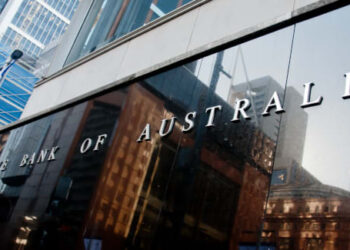There is growing concern some parts of the fixed interest markets may soon hit serious turbulence. Risk bubbling away below the surface has started to emerge. Investors with exposure to riskier assets face the prospect of capital loss. There may be a rude shock for advisers who find a conservative investment choice for their clients suddenly turns out to be anything but. Fixed interest returns are generated by taking interest rate risk, yield curve risk, credit risk or liquidity risk. Interest rate risk refers to the interest rate sensitivity of the portfolio. Yield curve risk is where you decide whether to invest in shorter or longer-term bonds. Credit risk is whether you are adequately compensated for investing in lower quality securities. Liquidity risk is where you invest in securities where the ability to access your money is reduced. Again the benefit is a higher yield.
In recent years, as economies improved, it was appropriate that central banks raised rates to more normal levels, which has dampened returns from fixed interest. Further, the general lack of volatility in fixed interest markets has reduced the opportunities for fixed interest managers to add value. In the current environment, investors in many markets have faced an inverted yield curve (longer-term bond investments offer a lower interest rate than shorter-term bonds). Such a phenomenon means there is little compensation for holding longer-term bonds. Further, there is the potential for significant capital losses where a portfolio holds longer-term bonds and these rates rise.
While long-term bond rates have risen recently, the difference between longer and shorter-term rates remains smaller than it has historically. As a consequence, fixed interest managers worried about capital loss continued to focus on shorter-term investments. This position offers a similar return to cash. In corporate credit, the compensation for risk has contracted over the past four years as shown in the graph. With strong corporate profitability, prices reflect a perceived lower risk of what had previously been regarded as riskier assets.
Investors worried about permanent capital loss were unwilling to accept the additional reward offered for this risk. With default rates globally the lowest in 18 years, those that have invested in these lower quality corporate bonds have secured some additional return. However, there are signs the risks are growing. The Bank of International Settlements recently released its annual report. In the report, it suggested a convergence of worrying signs across the globe, such as current account imbalances, a resurgence of global inflation risk, soaring household debt, extreme appetite for investment risk and the increased vulnerability of financial markets. They say there is a growing threat of a major economic slump. The suggestion the current environment is unsustainable makes low quality credit investments a very risky place to be.
Recent problems with United States low document mortgages (known in the US as sub-prime mortgages) highlight how risks can re-emerge in fixed interest markets. The downturn in the US property market has not found a bottom and the corresponding influence on homeowners and consumers has yet to be fully realised. The value of mortgage-backed securities in the US market is around $9000 billion, which is double the value of US Treasuries. The enormous growth and size of this part of the market makes the broader fixed interest market vulnerable when risks become apparent. As the housing market slows and borrowers are faced with rising interest rates, the risk of default is coming to the fore.
The rising risk was illustrated by the difficulties of two funds managed by large US investment bank Bear Stearns. These funds are heavily exposed to low document loans. They lost significant value in the first four months of 2007 with these losses amplified by high levels of leverage. Bear Stearns had to pledge $2 billion-3 billion of its own money to stabilise the smaller of these two funds. Leading US economic commentator Woody Brock says if a company with the history and size of Bear Stearns can miscalculate the risk, then what hope is there for the hundreds of other funds invested in a similar way.
The risk with low document mortgages reflects the general risk with collateralised debt obligations (CDO). A CDO is an investment grade security backed by a pool of bonds, loans and other assets. They offer a higher yield than safer fixed interest investments, such as government bonds. However, investors worried about risk believe this higher rate is not enough to compensate for the possibility of permanent capital loss. Many participants in the CDO market believe dangers are looming as default rates increase. Recently in New York in one week, values on A-rated CDOs and mortgage-backed securities were falling by more than 10 per cent in some issues. If these better quality CDOs are starting to falter, then the potential for collapse among lower quality CDOs is high.
There is also the potential domino effect of significant falls in the value of lower quality investments. The impact of a major collapse is very uncertain given the low level of transparency on structures and prices, the high level of leverage and the involvement of hedge funds. This is not the time to compromise on quality. The risk of permanent capital loss is significant for those who have sacrificed quality in a reach for additional yield. Intense research will be crucial to understand the risk, particularly the level of leverage, embedded in fixed interest assets. In an environment of greater uncertainty, the ability to scan the globe for opportunities and to manage risk will also be vital.







